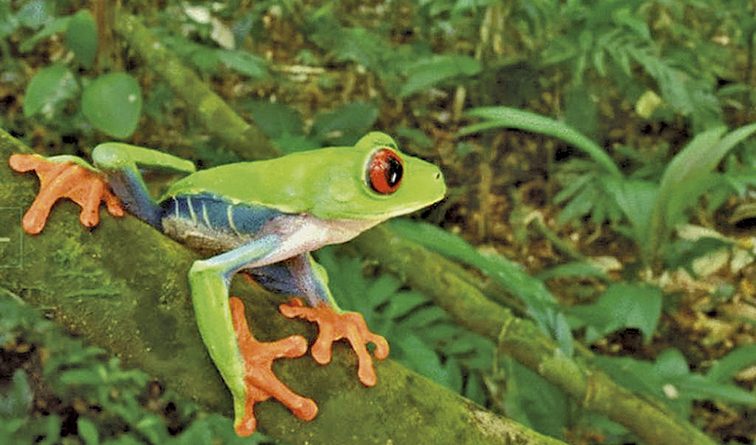“Lost City of the Monkey God” reveals treasure trove of rare, new and rediscovered species
In 2012, centuries-old legends of a lost city in Honduras were confirmed when ancient ruins were rediscovered in the dense Mosquita rainforest. Now, scientists have conducted a three-week expedition to these ruins, known as the “White City” or the “Lost City of the Monkey God,” and found a trove of natural treasures. Living in the pristine forests around the city is an incredibly rich array of wildlife, including species new to science, some unknown in the area, some that haven’t been seen in decades and others that were believed extinct.
The White City lies at the heart of the Honduran Mosquita, 865,000 acres (350,000 hectares) of pristine and relatively unexplored rainforest. In 2017, a team of scientists led by the government of Honduras and Conservation International’s Rapid Assessment Program (RAP), was taken via helicopter to a specific site called the City of the Jaguar, to conduct a three-week biological survey of the region.
The results have now shown that the area is home to an incredible biodiversity of animals and plants. Overall, the team identified 183 species of plants, 246 butterflies and moths, 198 birds, 22 amphibians, 35 reptiles, 13 fish, 40 small mammals and 30 medium to large mammals.
Of these, one species of poeciliid fish (or “molly”) was found to be new to science. The team says that it’s likely that other new species probably inhabit these clear waters, and importantly no invasive fish species were found in the area.
Three of the creatures were previously known but had been missing and feared extinct for decades. That includes the Pale-Faced Bat, which is common across South and Central America but hasn’t been reported in Honduras in more than 75 years. The False Tree Coral Snake also made a reappearance in the country for the first time since 1965. And a certain species of tiger beetle was a surprising find, given it was both presumed extinct and before that, thought to be confined to Nicaragua.
In total, 22 of the observed species had never been recorded in Honduras before, including some extremely rare animals like the Great Green Macaw. The team also found a thriving population of white-lipped peccaries – a pig-like animal – which are widely struggling in other parts of the continent thanks to deforestation.

These abundant herbivores showed that human hunting was low in the surrounding areas, leaving these prey animals able to support a range of predators. That includes big cats like jaguars and pumas, which were spotted during the expedition. Ecosystems this healthy are hard to come by nowadays, the researchers say.
“Our team of scientists were shocked at the discovery of tremendously rich biodiversity, including many rare and threatened species,” says Trond Larsen, Director of the Rapid Assessment Program. “The White City is one of the few areas remaining in Central America where ecological and evolutionary processes remain intact.”
The rainforests and archaeological ruins around the City of the Jaguar and the rest of the White City will be protected and researched.


 (1) (2).jpg)


Debe estar conectado para enviar un comentario.